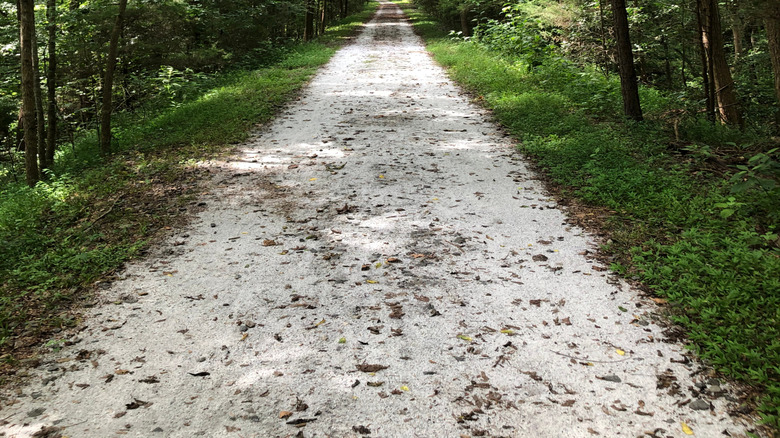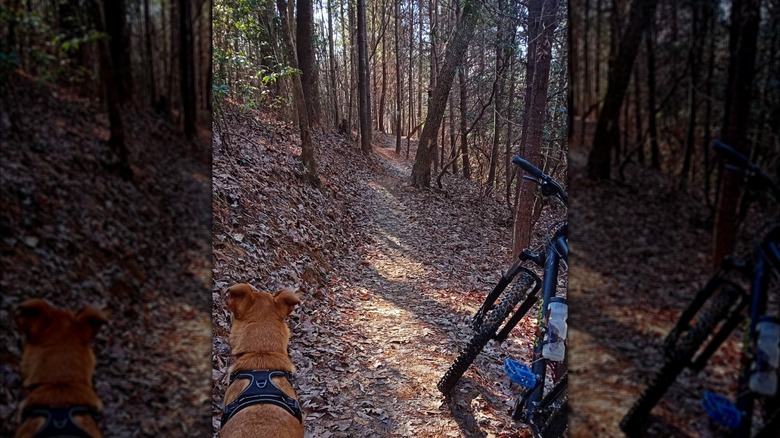South Carolina's Longest Pedestrian And Bike Trail Is A Breathtaking Path Connecting Mountains And Coast
Did you know that you can walk from the Atlantic to the outer edge of the Appalachian Mountains, all of it connected through a series of hikeable and bikeable paths? Established in 1994, the Palmetto Trail is the longest in South Carolina, with 31 passages across the state between Awendaw and Walhalla. The total journey spans 500 miles.
Each passage is graded on a scale of easy to strenuous, and lengths vary from 1.3 to 47 miles, giving beginners and seasoned explorers a wide range of options. Different passages also promise different views. Sections in the Midlands, for example, combine nature hikes with picturesque farmlands, while sections deep in the forest promise proximity to rare fauna and flora. The Blue Wall Passage, which sits on the South Carolina and North Carolina border, boasts a 30-foot waterfall in addition to being home to over 100 species of birds. This makes it a top choice for birdwatchers and wildlife photographers.
Some of the passages along the Palmetto Trail are especially long and tough, so if you're traveling alone, brush up on safety tips before your solo hike, as it's unlikely that you'll be crossing paths with many fellow hikers along your journey.
Explore the Palmetto Trail on foot, bike, or horse
Perhaps the biggest draw of the Palmetto Trail is its accessibility. All passages are accessible on foot, most will be suitable for bikers, and a few are open to horses. Bikers, especially, will be spoiled for choice of mountain paths to choose from. Of note is the Stumphouse Passage, which offers direct access to the Stumphouse Mountain Bike Park, a biking facility for beginner and experienced bikers looking to perfect their tricks. Some passages have dedicated sections for cyclists and equestrians, but others are only partially accessible, so be sure to check the passage's details before visiting.
You'll also find urban passages, such as the Capital City Passage. This 10-mile walking path takes travelers through the streets of Columbia. It's ideal for families with small children or people with mobility disabilities, who can enjoy the thrills of exploration via trail on paved roads and sidewalks.
Planning a multi-day hike? Very long trails, like the 36-mile-long Lake Marion Passage, allow camping in certain locations along the trail, but hikers should check the specifics beforehand.
Discover local food and history beyond the trail
All Palmetto Trail passages include natural vistas and forest paths, but many have sections that will take hikers through small towns and communities. Not only do these make for good resting points, but they should also be seen as an invitation to discover local food and history.
Oconee Passage, for example, is one of the difficult passages on the Palmetto Trail and ends at the Oconee Station State Historical Site. This particular location has a long history, dating back to the 18th century, and its purpose changed throughout the centuries until it eventually became a protected part of South Carolina State Park. If delicious Southern food is what you're looking for, then the Awendaw Passage may be for you. The easternmost passage along the Palmetto Trail is a short 40-minute drive north of Charleston, which is ranked among the five U.S. cities offering the best barbecue in the country.
Occasionally, Palmetto Trail passages will double as entry points to other notable destinations, including Caesar's Head, one of South Carolina's most intriguing hidden gems. Swamp Fox Passage (pictured) is the longest on the Palmetto Trail and leads to Lake Moultrie, taking hikers through the Francis Marion National Forest. The passage connects to the Lake Moultrie passage via Bonneau.


